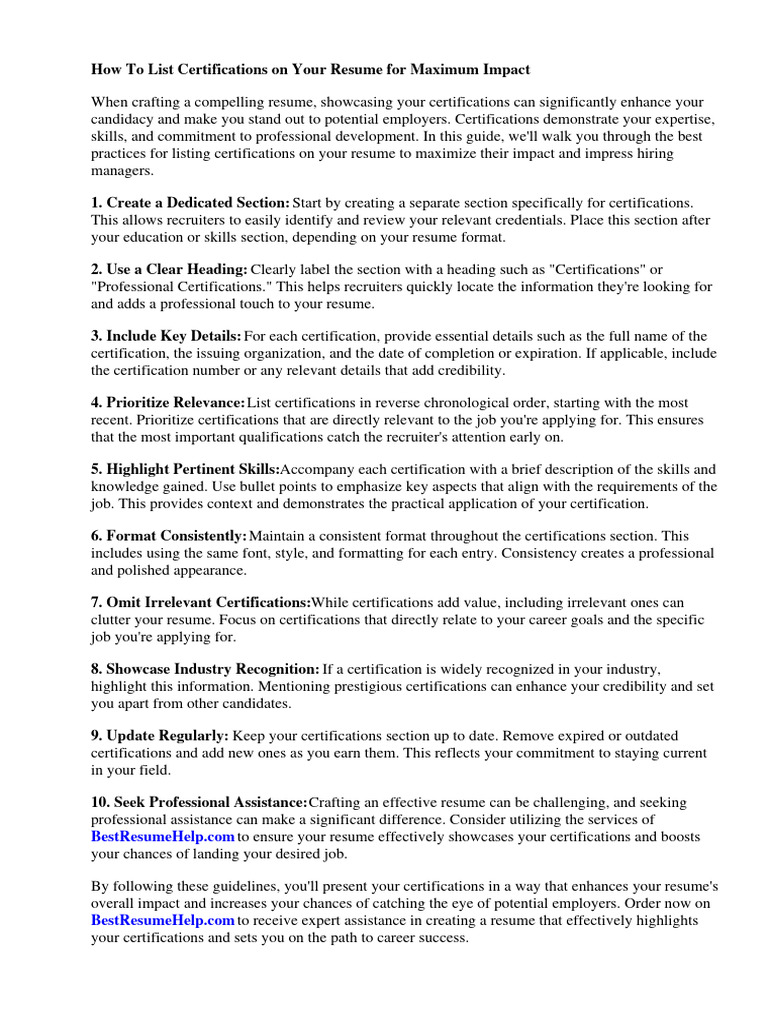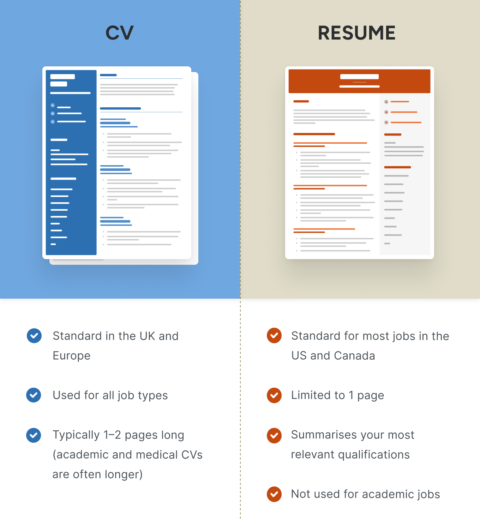In the grand tapestry of a professional narrative, certifications emerge as vibrant threads that weave a compelling story of expertise and dedication. The placement of these credentials on a resume can significantly influence the perception of a potential employer. When one contemplates the architecture of a resume, it is vital to understand where these certifications can be best showcased to create a harmonious and engaging presentation of qualifications.
Understanding the anatomy of a resume is akin to learning the intricate moves of a ballet performance. Every section plays a role, but some performers—like certifications—have specific moments to shine. The core sections of a resume typically include the header, summary, experience, education, and skills. However, when it comes to certifications, strategic placement is paramount to spotlight their relevance and importance.
Some professionals choose to position their certifications prominently in a dedicated section titled “Certifications” or “Licenses.” This section can serve as a tangible testament of one’s commitment to continuous learning and adherence to industry standards. By placing this section after the summary or objective statement but before the professional experience, candidates can immediately draw attention to their specialized knowledge. This method allows the reader to recognize the applicant’s qualifications as they dive deeper into their work history.
Alternatively, certifications can nestle within the relevant experience sections, particularly when these credentials are directly applicable to the positions listed. For instance, an IT professional may mention certifications like Cisco Certified Network Associate (CCNA) next to a job where networking skills were paramount. This method creates a robust narrative that seamlessly ties educational achievements to practical applications. It transforms the resume into a storytelling compass, guiding the reader through a landscape of skills and accomplishments.
Yet, there exists an artful way to blend certifications into the skills section, especially when the resume stitches together multiple relevant skills. By integrating certifications alongside key competencies, a candidate can provide a multidimensional portrait of their capabilities. This approach particularly shines in fast-paced industries where specific certifications can be the pivotal differentiator amid a sea of applicants. Here, the synergy between skills and certifications cultivates a magnet for attention.
Furthermore, it is crucial to consider the sequence in which certifications are listed. Certifications should be organized hierarchically, with the most advanced or relevant credentials articulated first. If a candidate holds an array of certifications, prioritizing those directly related to the desired position can lend a more focused and strategic appearance. For example, if a job description emphasizes project management expertise, the Project Management Professional (PMP) certification should take center stage, highlighting its pertinence to the employer’s needs.
Additionally, the formatting of the certification section can augment its visual appeal, ensuring that it captures the reader’s gaze. Using bullet points to delineate each certification allows for clarity and readability. Implementing boldface for the certifications themselves can further enhance their visibility, casting them in a spotlight against the backdrop of other text. Consider the coherence of the overall document; a well-structured resume with strategic use of white space amplifies the impact of the certifications listed.
Visual appeal aside, the content of the certification portfolio can also act as an engaging narrative. Rather than merely stating “Certified Six Sigma Green Belt,” a candidate could enhance appeal by briefly elucidating the skills gained through the certification or notable projects completed that utilized those skills. This tactic blends the analytical with the anecdotal, enriching the reader’s understanding of the candidate’s journey toward expertise.
As one traverses the realm of resume creation, it’s essential to strike a balance between showcasing certifications and maintaining overall professionalism. Overloading the resume with inconsequential certifications can dilute the message and overwhelm the reader. Instead, a curated selection that reflects dedication and relevance to the field will resonate much more effectively. A few carefully chosen certifications can echo louder than a plethora of ill-fitting credentials.
Candidates must also remain vigilant of industry trends, adjusting their certifications over time to reflect new developments within their fields. Just as a skilled gardener prunes their plants to foster growth, professionals should continually reassess their qualifications, ensuring that they reflect the most current and applicable skills. This proactive approach to certification management not only fortifies one’s resume but also signals an adaptable and forward-thinking mindset to potential employers.
In conclusion, the placement of certifications on a resume is not simply a matter of strategic positioning; it reflects a deeper narrative of professional growth and an unyielding commitment to excellence. By treating certifications as critical threads within the larger fabric of their professional identity, candidates can construct a compelling and inviting resume that stands out in a competitive landscape. The journey of crafting a resume is akin to weaving a rich tapestry—every section, every credential, must harmonize to tell a story of ambition, capability, and readiness for new challenges.




